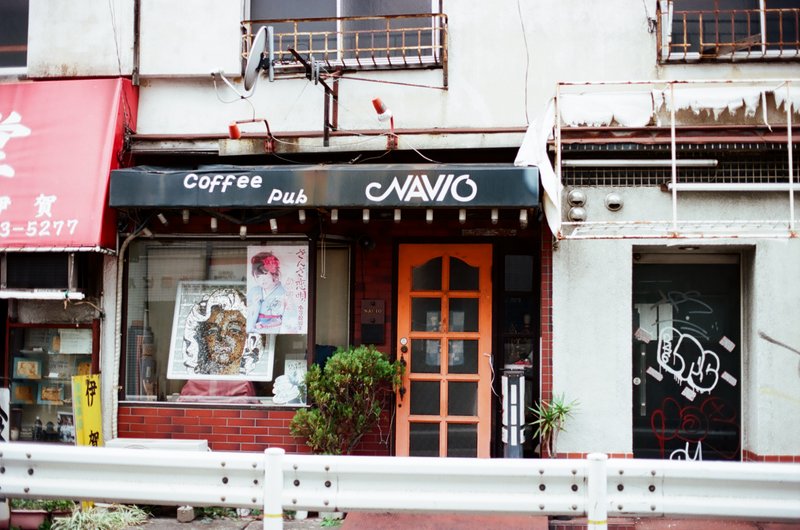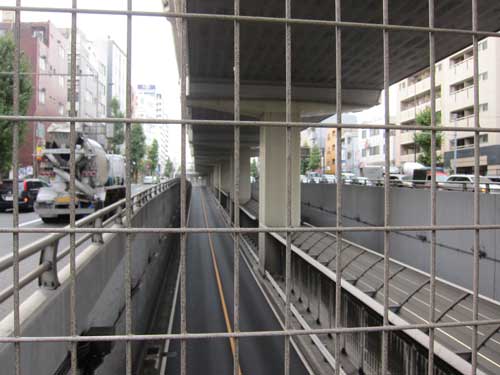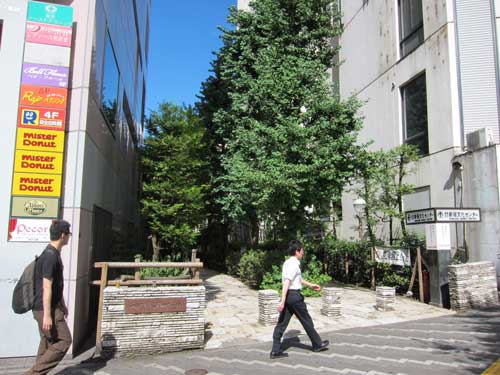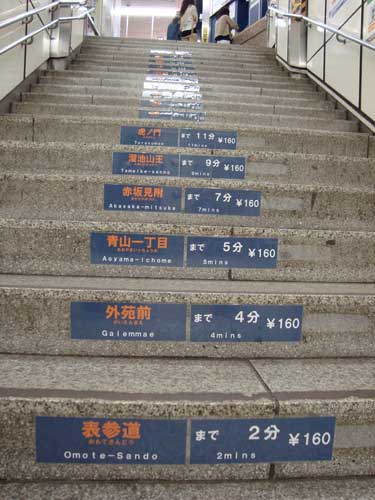
This small commercial strip, near the center of Nakano, seems semi-abandoned.

Day and night you can see people fishing in these stocked ponds on the Outer Moat, across from Ichigaya station. The contrast between the busy transit corridor, the beautiful moat, and the leisurely city fishers is enchanting.

Is dead corridor the opposite of green corridor? What are the effects of urban highways?
死んでいるような交通ルートは緑の交通ルート『green corridor」の反対ですか?都市の高速道路はどんな影響をあたえるでしょうか?
Many landscape architects and urban biodiversity planners talk about the value of green corridors: places that provide wildlife shelter, that connect neighborhoods, integrate city and country, and mitigate the heat island effect. What should we call the multi-level roadways that are in many ways the opposite, that divide neighborhoods and reduce life? Dead corridors?
I took this photo on Linus Yng’s architecture bike tour; I think it’s near Sasazuka. It’s very close to the lovely remnant of the Tamagawa josui (玉川上水). I think the image makes an interesting contrast with the serenity of the train photos from yesterday’s post.

Via Twitter, I’ve come across some fantastic new urban ecology projects in San Francisco:
Nature in the City, an NPO focused on conservation, restoration and stewardship. Currently creating habitat corridors for the the Green Hairstreak (Callophrys dumetorum), a small butterfly present in only three places in the city.
Urban Gleaning Program, a project of San Francisco’s Department of Public Works that encourages city residents to collect fruit from city trees and community gardens and distribute them to the homeless and hungry.
Urban Hedgerow, a new global cities project that creates space and allow more of our wild world into the city. The project joins urban naturalists and artists to increase insect, animal, and plant life, with projects starting in San Francisco, Los Angeles, New York, the UK.


There are many small creeks in Tokyo that have been turned into pedestrian paths. In my neighborhood, they are modestly landscaped. In Shinjuku, there’s Shinjuku Yuhodo Koen Shiki no Machi (新宿遊歩道公園四季の道), an amazing green corridor with mature trees between the department stores of San Chome, Hanazono Shrine, the packed bars of Golden Gai, and Kabukicho.
Oddly, my very detailed Tokyo City Atlas does not include the path’s name. It’s easy to miss it, but once inside it feels like a magical passageway, full of life during the day and at night. Green corridors take up minimal space, and are perhaps more useful than small parks since provide a path between places.

A great transit system is essential for a walkable and livable city. This frees residents from owning or using cars for most trips, and allows streets and public spaces to be used for people rather than vehicles.
What makes Tokyo’s transit system truly great? Speed, reliability, convenience, and ubiquity are remarkable. On top of that you have remarkable signage, including the steps on the Ginza line’s Shibuya station which remind me you of the sequence of stations, minutes required to arrive, and the fare. And, at the end of this post, you can see an example of outstanding art in a transit corridor, whose delight, awe, and mild terror adds an emotional level to all the functional goodness of Tokyo transit.